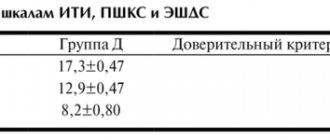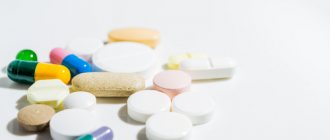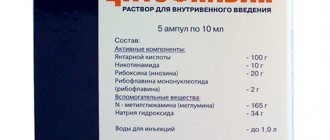pharmachologic effect
The active component, being an antagonist of calcium ions , causes blocking of calcium channels in the cells of cardiomyocytes and arteries. Thus, nifedipine affects the cardiac and peripheral vessels, causing them to expand. Does not affect the tone of the smooth muscle muscles of the veins. Such a reaction helps to lower blood pressure , reduce peripheral vascular resistance (mostly arterioles), reduce the oxygen needs of cardiomyocytes and, accordingly, all this leads to a significant reduction in the load on the heart as a whole. One of the functions of nifedipine is also the inhibition of platelet .
Side effects
From the blood and lymphatic system: anemia, leukopenia, thrombocytopenia (sometimes with the manifestation of purpura), agranulocytosis.
From the nervous system and psyche: headache, migraine, dizziness/vertigo, tremor, par-/di-/hypoesthesia, sleep disturbance, drowsiness, anxiety.
From the organ of vision: blurred vision, sensation of pain in the eyes.
From the cardiovascular system: tachycardia, palpitations, arterial hypotension, edema, vasodilation, hyperemia, collapse, chest pain (including typical attacks of angina), loss of consciousness.
From the respiratory system, chest and mediastinal organs: nosebleeds, nasal congestion, shortness of breath.
From the digestive tract: nausea, vomiting, dyspepsia, diarrhea, constipation, flatulence, discomfort/pain in the digestive tract, abdominal pain, intestinal obstruction, intestinal ulcer, gastroesophageal sphincter insufficiency, bezoar, dry mouth, gingival hyperplasia, dysphagia.
From the hepatobiliary system: transient increase in the activity of liver enzymes, jaundice, cholestasis.
From the side of metabolism and metabolism: hyperglycemia.
From the urinary system: polyuria, dysuria, in patients with renal failure - deterioration of renal function.
From the musculoskeletal system and connective tissue: myalgia, arthralgia, muscle cramps, joint swelling.
From the reproductive system and mammary glands: erectile dysfunction, gynecomastia (in older men).
From the immune system, skin and subcutaneous tissue: hypersensitivity reactions, including rash, itching, urticaria, allergic edema/angioedema, including laryngeal edema; anaphylactic/anaphylactoid reactions, erythema, photosensitivity, purpura, exfoliative dermatitis, toxic epidermal necrolysis (Lyell's syndrome).
Patients with malignant arterial hypertension and hypovolemia undergoing hemodialysis may experience a significant decrease in blood pressure due to vasodilation.
Indications for use
Phenigidine is prescribed for blood pressure, an increase in which is associated with the following cardiovascular diseases:
- arterial hypertension;
- hypertrophic cardiomyopathy;
- Raynaud's disease.
The medication is used to quickly relieve a hypertensive crisis and prevent attacks of angina pectoris ( ischemia ).
What else can Phenigidine be used for? In pulmonology, the drug is prescribed for:
- pulmonary hypertension;
- broncho-obstructive syndrome.
Features of application
Pregnant
There are no adequate and well-controlled studies of the drug in pregnant women. An increased incidence of perinatal asphyxia, cesarean section birth, as well as preterm birth and intrauterine growth retardation has been reported. It is not completely clear whether these reports are a consequence of the presence of arterial hypertension, its treatment, or the specific effect of the drug. The available information is insufficient to rule out serious side effects on the fetus or newborns. The question of drug therapy should be considered only if there are no alternative treatment options.
Nifedipine passes into breast milk. While using the drug, you should stop breastfeeding.
Children
The drug should not be used in children.
Drivers
When using the drug, adverse reactions may occur that affect the reaction rate when driving vehicles or other mechanisms, especially at the beginning of treatment or when switching to another drug.
Contraindications
- low systolic pressure ( hypotension );
- severe heart failure
- collapse;
- individual hypersensitivity to the active substance or similar dihydropyridines;
- aortic stenosis;
- cardiogenic shock;
- myocardial infarction in the acute period;
- period of pregnancy and lactation .
Side effects
- a sharp drop in blood pressure;
- swelling of the lower extremities;
- asystole;
- redness of the skin of the chest and face;
- tachycardia;
- bradycardia.
Possible disturbance of central nervous system reactions:
- moderate drowsiness ;
- sleep disorders;
- blurred visual perception;
- dizziness;
- limb tremors;
- migraine headache.
From the gastrointestinal tract:
- diarrhea;
- nausea;
- heartburn;
- depression of liver function.
Instructions for use of Phenigidine (Method and dosage)
The dosage is determined individually, taking into account several factors (age, concomitant diseases, general reaction of the body, etc.). As a rule, the minimum dosage is 10 mg (in some cases 20 mg), the number of doses is up to 4 times a day. For coronary artery stenosis, the minimum dose is 50-100 mcg. The instructions for Phenigidine provide for the maximum safe number of tablets per day - no more than 12 pieces.
To relieve attacks of angina pectoris and hypertensive crisis, it is necessary to take the drug sublingually until completely dissolved. Additionally, it is recommended to take a lying position for at least 1 hour.
Dose adjustment is carried out with extreme caution, gradually increasing or decreasing the amount of the active substance. To avoid side effects, it is advisable to take the drug with food.
The course of therapy is determined according to indications and usually lasts 1-2 months. Next, the attending physician selects another treatment regimen.
Mode of application
The drug should be used internally by adults. Take the tablets at the same time, regardless of meals, without chewing, with a sufficient amount of liquid (except grapefruit juice). The recommended interval between use of the drug is 12 hours (but not less than 6 hours).
The dose of the drug and the duration of treatment are determined individually, taking into account the severity of the disease and the patient’s response to treatment.
Arterial hypertension: use the drug in a dose of 20 mg 2 times a day.
Coronary heart disease: use the drug in a dose of 20 mg 2 times a day. If necessary, it is possible to increase the dose of nifedipine to 60 mg/day. The dose should be increased gradually.
Patients concomitantly taking inhibitors or inducers of cytochrome CYP 3A4. When used simultaneously with inhibitors or inducers of cytochrome CYP 3A4, dose adjustment or discontinuation of the drug may be required.
The drug should be discontinued gradually, especially when using high doses.
Overdose
In case of an overdose, a dangerous decrease in systolic blood pressure occurs. The following symptoms are observed:
- bradycardia;
- collapse;
- arterial hypotension (can lead to loss of consciousness);
- disturbance of rhythm and conduction of the heart;
- headache.
If there are symptoms of poisoning, you should immediately perform gastric lavage and take activated charcoal . In especially severe cases, patients are prescribed a 10% calcium chloride solution intravenously.
Phenigidine
From the cardiovascular system: tachycardia, arrhythmias, peripheral edema (ankles, feet, legs), manifestations of excessive vasodilation (asymptomatic decrease in blood pressure, “flushes” of blood to the facial skin, flushing of the facial skin, feeling of heat), excessive decrease in blood pressure (rarely), fainting , development or worsening of heart failure (usually worsening of an existing one). In some patients (especially with severe obstructive lesions of the coronary arteries), at the beginning of treatment or when the dose is increased, attacks of angina pectoris may occur, including the development of myocardial infarction (requires discontinuation of the drug).
From the nervous system: headache, dizziness, increased fatigue, asthenia, drowsiness. With long-term ingestion in high doses - paresthesia of the limbs, tremor, extrapyramidal (parkinsonian) disorders (ataxia, mask-like face, shuffling gait, stiffness of the arms or legs, tremor of the hands and fingers, difficulty swallowing), depression.
From the digestive system: dry mouth, increased appetite, dyspepsia (nausea, diarrhea or constipation); rarely - gum hyperplasia (bleeding, pain, swelling), with long-term use - liver dysfunction (intrahepatic cholestasis, increased activity of liver transaminases).
From the musculoskeletal system: rarely - arthralgia, swelling of the joints, myalgia.
From the hematopoietic organs: anemia, leukopenia, thrombocytopenia, thrombocytopenic purpura, asymptomatic agranulocytosis.
From the urinary system: increased daily diuresis, deterioration of renal function (in patients with renal failure).
Allergic reactions: rarely - itching, urticaria, exanthema, autoimmune hepatitis.
Local reactions: burning at the site of intravenous administration.
Other: rarely - visual impairment (including transient loss of vision against the background of Cmax in plasma), gynecomastia (in elderly patients, completely disappearing after withdrawal), galactorrhea, hyperglycemia, pulmonary edema (difficulty breathing, cough, wheezing), weight gain. Overdose. Symptoms: headache, flushing of the facial skin, prolonged pronounced decrease in blood pressure, suppression of sinus node function, bradycardia, bradyarrhythmia.
Treatment: in case of severe poisoning (collapse, depression of the sinus node), gastric lavage is performed and activated charcoal is prescribed. The antidote is Ca2+ preparations: slow intravenous administration of 10% CaCl2 or calcium gluconate is indicated, followed by switching to a long-term infusion.
With a pronounced decrease in blood pressure, dopamine or dobutamine is administered intravenously. For conduction disorders - atropine, isoprenaline or an artificial pacemaker. With the development of heart failure - intravenous administration of strophanthin. Catecholamines should be used only when there is a threat to life (due to their reduced effectiveness, a high dosage is required, which increases the risk of developing arrhythmia). It is recommended to monitor blood concentrations of glucose (insulin release may decrease) and electrolytes (K+, Ca2+).
Hemodialysis is ineffective.
Interaction
The drug has a more pronounced effect when taken simultaneously with other drugs to lower blood pressure, nitrates, diuretics, tricyclic antidepressants, Ranitidine , Cimetidine . In combination with beta-blockers, it can cause circulatory problems in the heart muscle and increase arterial hypotension.
The effectiveness of nifedipine is reduced when taken simultaneously with calcium supplements, Phenytoin , Rifampicin , Phenobarbital , Carbamazepine .
When taken simultaneously with Digoxin , Quinidine and Theophylline, the concentration of the latter in the blood plasma changes. Ethanol can enhance the effect of nifedipine, thereby causing dizziness, weakness, and coronary circulatory disorders.
Phenihidin
Caution should be exercised when combining Phenigidine with the following drugs:
- antihypertensives (ACE inhibitors, diuretics, etc.), nitrates, psychotropic drugs and magnesium preparations, because possible summation of their antihypertensive effects;
- combination with beta-blockers enhances antihypertensive and antianginal effects, which is usually desirable; however, this combination of drugs should be used with caution due to the risk of excessive reduction in blood pressure, the development of arterial hypotension and heart failure;
- combined use with prazosin can cause severe orthostatic hypotension;
- combined use with digoxin can lead to an increase in the level of digoxin in the blood plasma;
- combined use with quinidine requires special caution, because the level of quinidine in the blood plasma may decrease with the introduction of nifedipine and increase after its withdrawal; coadministration of these two drugs may cause malignant ventricular arrhythmia (abnormal prolongation of the QT interval on the ECG);
- diltiazem increases the level of nifedipine in the blood plasma;
- nifedipine may enhance the anticoagulant effects of coumarin derivatives. Since nifedipine is metabolized by the enzyme CYP3A4, any inhibitor or inducer of this enzyme may affect the metabolism of nifedipine;
- grapefruit juice, erythromycin and azole antimycotics (fluconazole, intraconazole, ketoconazole) can suppress the metabolism of nifedipine and therefore enhance its effects. Likewise, simultaneous use of nifedipine and cimetidine increases the plasma levels of nifedipine and enhances its effects; however, simultaneous administration with ranitidine does not lead to a significant increase in plasma levels of nifedipine;
- rifampicin and phenytoin (metabolism inducers) - significantly reduce the level of nifedipine in the blood plasma; the same interaction with barbiturates and carbamazepine cannot be excluded;
- cyclosporine is also a substrate of the CYP3A4 enzyme; therefore, when cyclosporine and nifedipine are administered together, each may increase the duration of the effect of the other;
- the hypotensive effect is reduced by sympathomimetics, non-steroidal anti-inflammatory drugs (suppression of prostaglandin synthesis in the kidneys and sodium and fluid retention in the body), estrogens (fluid retention in the body);
- calcium supplements can reduce the effect of BMCC;
- can displace drugs characterized by a high degree of binding from protein binding (including indirect anticoagulants - indanedione derivatives, anticonvulsants, NSAIDs, quinine, salicylates, sulfinpyrazone), as a result of which their concentration in the blood plasma may increase;
— the severity of the decrease in blood pressure is enhanced by inhalational anesthetics;
- in combination with nitrates, tachycardia increases;
- lithium preparations can increase toxic effects (nausea, vomiting, diarrhea, ataxia, tremor, tinnitus).
Procainamide and other drugs known to prolong the QT interval increase the negative inotropic effect and may increase the risk of significant QT prolongation.
special instructions
Phenigidine must be used under the strict supervision of a physician, and in case of myocardial infarction, diabetes mellitus , diseases of the hepatic system, pathology of cerebral circulation, hypovolemia, hemodialysis - only in a clinical setting.
The dose is increased and decreased gradually. Abruptly stopping treatment can be dangerous. For the elderly, a dose reduction is recommended due to reduced metabolism. For speedy absorption, it is recommended to dissolve the tablet under the tongue until completely dissolved. During treatment, alcohol and substances that lower blood pressure are not allowed.
During the treatment period, it is not recommended to drive various types of transport, machinery or carry out work that requires increased attention and concentration.
Analogs
Level 4 ATC code matches:
Lacipil
Cordafen
Azomex
Nimodipine
Felodipin
Nifedipine
Farmadipin
Amlotop
Nimotop
Tenox
Nifecard HL
Cordipin
Felodip
Normodipine
Norvask
Cordaflex
Lerkamen
Corinfar
Vero-Amlodipine
Amlodipine
There are many analogues of Phenigidine with a similar mechanism of action:
- Nifedipine
- Cordipin
- Myocardium
- Nifecard
- Corinfar
Reviews about Phenigidine
Analysis of information on medical portals led to the conclusion that this drug is considered outdated, and many restrictions on use force doctors to prescribe safer and more modern analogues. Reviews report that the development of side effects is quite common. In this regard, many forum participants are worried about their health, but at the same time unanimously confirm the effectiveness of this drug, especially during attacks of angina pectoris and a sharp increase in systolic pressure.
Phenigidine differs from other antihypertensive medications in the presence of additional effects, because the active substance not only reduces blood pressure, but also has an antiatherosclerotic effect. The opinions of patients on this matter are divided: some choose an effective drug for hypertensive crises, turning a blind eye to pronounced side effects, while for others it is preferable to take safe, modern drugs that not only smoothly lower blood pressure, but also do not cause negative reactions.
Note!
Description of the drug Phenigidine-Zdorovye table. 10mg No. 50 on this page is a simplified author’s version of the apteka911 website, created on the basis of the instructions for use.
Before purchasing or using the drug, you should consult your doctor and read the manufacturer's original instructions (attached to each package of the drug). Information about the drug is provided for informational purposes only and should not be used as a guide to self-medication. Only a doctor can decide to prescribe the drug, as well as determine the dose and methods of its use.
Phenigidine price, where to buy
Phenigidine can be purchased at a pharmacy by presenting a doctor's prescription form. The price averages 14-31 rubles for 50 tablets and depends on the point of sale.
- Online pharmacies in RussiaRussia
- Online pharmacies in UkraineUkraine
Pharmacy Dialogue
- Phenigidine (tab. 10 mg No. 50) Health/Ukraine
24 rub. order
show more


